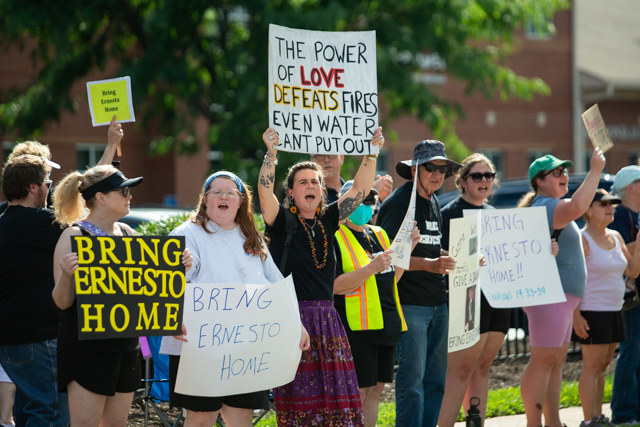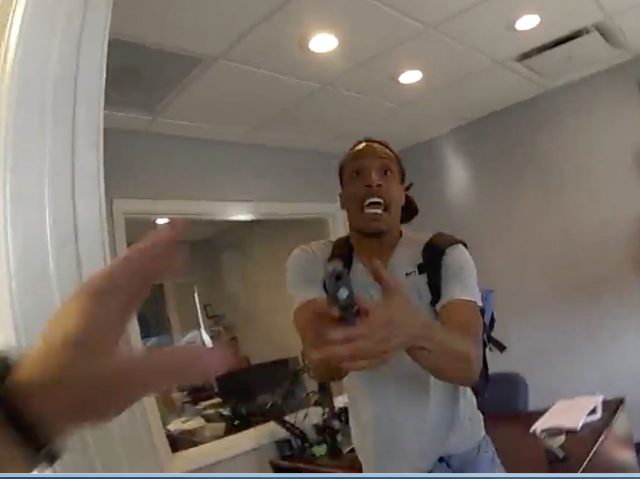Residents anxious about redevelopment plans
Published 12:00 am Wednesday, June 18, 2003
Lavinia Gatewood lives at 622 Second Ave. in a house that dates from 1881 with her husband, Bobby. Bobby Gatewood has lived in downtown Bowling Green all his 74 years; Lavinia moved there when they married 55 years ago, and their son and five daughters grew up there. Her home is conveniently close to The Medical Center and Kroger on U.S. 31-W By-Pass. She can quickly name half a dozen neighbors with similar stories. None of them really wants to leave, she said. But as Bowling Greens plan to redevelop downtown gathers steam, all may have to. No one understands, Gatewood said. Its the sentimental value. Weve been here for years and years. Gatewoods home is listed with her neighbors among 41 pieces of property earmarked for potential expansion of the medical facilities in a redevelopment plan the City Commission passed in January. The parcels are spread over five blocks on the southeast side of Chestnut Street from Fifth Avenue to U.S. 31-W By-Pass. The Medical Center and Graves-Gilbert Clinic already own large chunks of the area, but there has been little effort to buy Gatewood out before. Nobodys really contacted me except for one time, she said. A representative of The Medical Center knocked on Gatewoods door about a year ago and asked what shed take for her property, she said. But she never got a response. Redevelopment plans, however, shes familiar with. Im one of the survivors from Jonesville, Gatewood said. We have heard this thing before. Jonesville was a historically black community near University Boulevard bought up for Western Kentucky University expansion projects in the 1960s. Many residents felt they were unfairly forced out, and that an important part of the community was lost when Jonesville was demolished. Gatewood said her grandmother was one who lost a large house to that project. I do believe in progress and all that, but I do want to be dealt with fairly, she said. Some others in the downtown area most likely to be affected by redevelopment expressed similar feelings, tempering mild optimism with caution. Charles Clark owns several houses in the 600 block of Center Street that are on the citys list for definite purchase. Those buys may be years away, but hes already felt the first stirrings of redevelopment pressure. City code inspectors have already toured several other rental houses he owns downtown and have given him a long list of repairs and improvements needed to bring them up to code. Even though the work has cost him a large sum, Clark is cautiously optimistic about the citys goals, saying that even the improvements required so far have substantially improved his properties. Its just progress, he said. Theres not much that I can do about it. He figures that civic leaders have enough foresight and are fair enough to do things well. I just hope that they know what theyre doing, Clark said. It seems like theyve got a pretty good plan. Many of his tenants have lived in the downtown area all their lives and want to stay, he said. Clark knows they need decent housing, but can only afford so much in rent, he said. The city plan changes the type of businesses and other land uses that will be allowed in a 29-block area of downtown, which is encompassed roughly by Eighth Avenue, the riverfront, and Park and Center streets. That area, one of the oldest parts of Bowling Green, has been in decline for three decades. It aims to create a neighborhood with mixed uses, allowing people to live, work and shop within walking distance. This would be done by buying property with state and federal funds, then reselling the land to private developers and using the proceeds to buy more land. The city will buy land by mutual agreement when possible, but for some properties, the city might use its eminent domain power to condemn and buy land. For each piece of property, a developer would have to come to the commission and present a plan for its reuse, then ask the city to condemn the land for them, according to city Housing and Community Development Director Richard Rector. Each property up for possible acquisition will come before the city commission individually. The plan will come back to the commission each year to pinpoint the properties the city will buy next. There is no total cost estimate since some properties may not be bought; others will be resold for yet-unknown amounts and property values will certainly change over the next decade, Mayor Sandy Jones has said. The plan was designed to meet the standards set by Chapter 99 of the Kentucky Revised Statutes. That makes it more likely to get further grants from the Renaissance Kentucky program, which has contributed more than $3.5 million to redevelopment efforts in Bowling Green over the past several years. On May 12, a major piece of funding for the first part of the plan arrived. The city received a $1 million grant from the states Renaissance Kentucky program to buy some of the six parcels of land for Circus Square, a business and housing development surrounding a park between Sixth and Seventh avenues and College and State streets. Work on Circus Square may begin in six months, according to Cheryl Blaine, director of the Downtown Redevelopment Authority. Were pleased that the Renaissance Kentucky money has been announced, said Alice Burks, in the recently created position of assistant to the Housing and Community Development director Special Projects, which focuses on downtown redevelopment. We were told that it would be about two months earlier. We feel like this first piece will kick-start the entire redevelopment. Burks did not have an estimate of the total cost for Circus Square. In addition to that one, were looking at applying for another million dollars to do some more acquisition, Burks said. We havent pinpointed the area yet. We would like to continue the Circus Square acquisition, but there are some other areas were looking at. City staff is still trying to set priorities for redevelopment, she said. Hopefully, in a few weeks well have some substantial information for you, but right now were just trying to get everything organized, Burks said. In the approved plan, 11 properties are named for definite purchase: six houses, three business buildings and two empty lots. Another feature of the plan is building a housing development for the elderly between Second and Third avenues and State and Chestnut streets. Twelve properties would be bought for that: seven houses, one empty lot, three business buildings and the surviving gymnasium of the old State Street School. There has been no move toward the housing development for the elderly beyond some internal city discussion, Burks said. And the city has not discussed expansion of medical facilities with physicians groups, Graves-Gilbert Clinic, The Medical Center or other health care providers, she said. We have not had any meetings with them at this point, as far as reviewing development plans, she said. At this point we dont have anything firm that were working on. The parcels marked for possible purchase there include 34 houses, one church, one business building and six empty lots. The longest list of possible changes is of the 70 properties dubbed nonconforming uses in a mixed-residential neighborhood, such as body shops, warehouses and anything seen as run down or potentially disruptive. The list includes 35 business buildings (some on more than one parcel), six empty lots, 22 houses, a church and two old tobacco warehouses. The city would like to move them out if funds are available or at least remodel them so theyll blend well into an improved neighborhood. Several longtime businesses in the downtown area, including Phillips Ice Service and Randolph, Hale and Meredith Electronics Suppliers, are on that possible acquisition list, and have attracted local partisans as being good and loyal neighbors. Also on the list is Ray Jones and Sons Builders at 409 College St.Im not sure what I think about it, said Bud Jones, one of Ray Jones sons and partners. I know they all mean well, but I hope they dont run off some good businesses trying to make things better for everybody else. Improving their business appearance might be difficult, he said. We already spruced it up a lot when we moved down here, Jones said. So I dont know what else we can do to it. That leaves moving, which under state law means the city would have to find the Joneses a comparable property elsewhere and pay all reasonable moving expenses. Nobodys really come down here and talked about buying our property, Jones said. But if they want to buy it, Ill sell it.






